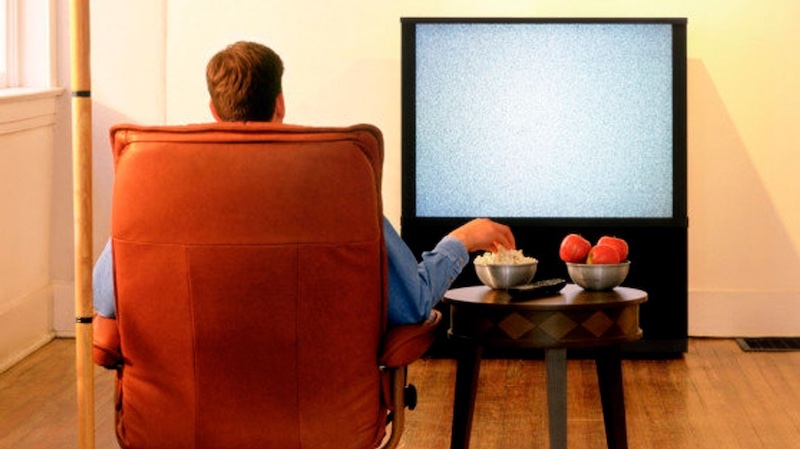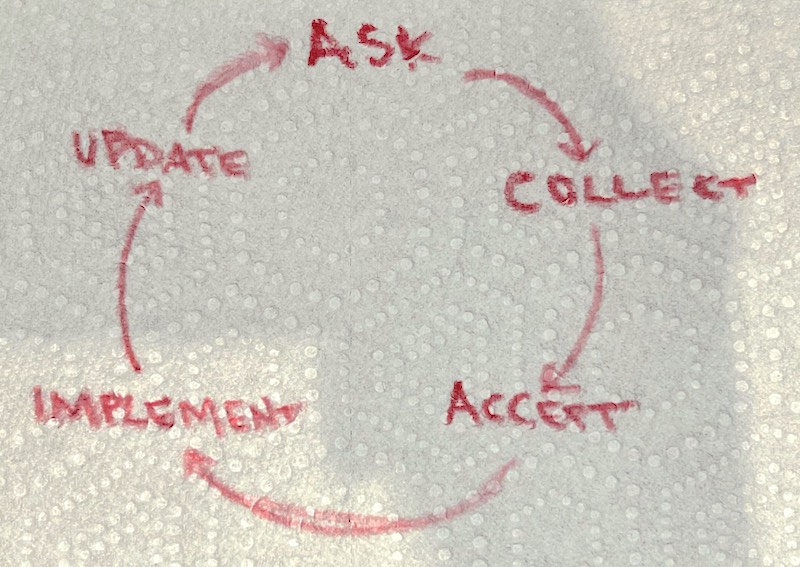I’m sure Suresh Joachim brings pride to his fellow Sri Lankans – just like Ashrita Furman brings pride to the faces of Americans everywhere.
After all, Suresh’s accomplishments led him to be featured on the “Live with Regis and Kelly” show for two days in a row. Which is probably two days in a row more than you’ve ever been on the show.

Suresh, you see, is a world record holder. Specifically, he holds the world record for the longest amount of time sitting on a couch watching TV.
Oh, and by “watching TV”, I mean actually watching the television. No looking around, no checking your phone, no resting your eyes. Just watching TV, like people used to do in the olden days.
He did this for 69 hours and 48 minutes, smashing the previous world record by nearly a day. If that’s not enough, he did it by only watching shows on the ABC Network (hence the spots on Regis and Kelly).
If couch potato were an Olympic sport, Suresh would hands down win the gold medal. He’s like the Michael Jordan of doing nothing.

The Discomfort of Feedback
As my wife and I always often sometimes say to each other, the hardest thing about exercise is starting it.
Isaac Newton’s First Law of Motion states that a body at rest will remain at rest unless an outside force acts on it.
Ergo, your body lying on the couch eating Cheetos until your skin turns orange will stay lying on the couch eating Cheetos until an outside force powerful enough forces you to put down the family pack of Cheetos, get up and move.
Let’s face it, when you’re used to not staying fit (mentally and physically), it’s so easy to continue not staying fit. Changing your behavior to one of health and fitness takes effort.
It takes discomfort.
It takes listening to your body’s feedback of where you’re failing and facing up to things you don’t want to face up to.
The person who automatically resorts to lying their life away on the couch (literally or figuratively) often believes that it’s the lying away their life that will make them happy.
It won’t.
Like every other animal on earth, the human body is at its peak state when it is healthy and fit.
The more effort you put into your physical and mental health, the happier you will be.
I’m not saying it’s easier. I’m just saying it’s better.
Increasing your happiness requires effort. It requires listening to feedback from your body and from others. But once you start turning that effort into a habit, you start wondering why you ever ate that many Cheetos in the first place.
I know, I know… you’re wondering what the heck this has to do with leadership? After all, you’re not reading The Best Leadership Newsletter Ever to talk about Cheetos.
So I suppose now would be a good time for me to actually get to my point.

The Feedback In Your Head Doesn’t Count
Building stuff is easy. All you need is a bucket and a pile of sand and – voila! – you can build your own castle.
When it comes to new products, creators always have ideas in their heads of what they want to create. So they go create it. They build and build and build, and then they put it out there and…
<crickets>
The sad reality is that “If you build it they will come” only works for baseball players in Iowa corn fields. It never works in real life.
So creators get deflated and feel defeated.
If they only had read my article on the Ikea Effect, their lives would have been easier.
Feedback is critically important in all steps of the process, but the feedback in your head doesn’t count.
It’s been proven that people place higher value and are more committed to products and concepts that they were involved in creating.
Getting potential customers involved in all stages of creating your product ensures you will have greater success.
The problem is that most creators don’t understand the importance of a powerful feedback loop..

The Importance Of A Powerful Feedback Loop
Back up yonder in this article, we talked about how changing your behavior takes effort. It also takes the discomfort of listening to feedback on where you’re failing and facing up to things you don’t want to face up to.
In all of my work with leaders through my strategic consulting practice, this is one of the biggest challenges I see when people create new products: They simply don’t want to hear other people’s opinions. They don’t want to hear that their own ideas may be wrong.
It happens all the time in every company.
I could tell people every day that they will have a better product and a better company if they build a strong and reliable feedback loop, but to do so requires changing behavior. It requires extra effort and the discomfort of facing up to feedback you don’t want to hear.
But it’s critical. The customer feedback loop is the difference between the company proverbially sitting on the couch with Cheeto fingers doing nothing, vs the company making the effort to be fit and healthy.
Just like people are more productive, innovative and resilient when they are healthy, companies are more productive, innovative and resilient when they establish healthy feedback loops.
So let’s talk about the 5 steps towards creating a healthy and powerful customer feedback loop

The 5 Steps of Creating a Healthy and Powerful Feedback Loop
These are the 5 steps to creating a healthy and powerful customer feedback loop. (Am I repeating myself too much?)
1. Ask For Help
First, you need to assemble a group of potential users. It should be an assortment of customers and prospects. The group size can be anywhere from 3 to 3,000, depending on the ask.
Make sure they know you highly value their opinion and would like them involved in giving feedback for the entire project. Let them know that you may not use their specific feedback, but you will consider it all.
Then ask for help.
Your questions could be anything. For instance:
- Which of these designs do you prefer?
- If you were to buy X, what are the three most important features that influence how much you’d pay?
- Which of the following five features would be most useful to you
Whatever the questions you ask, just keep it to less than 5 of them.
2. Collect The Feedback
Give your group a deadline to answer that is less than 2 weeks in the future. Remind them 2-3 days before the deadline.
Utilize a system that allows you to easily collect the data. Google Forms is a wonderfully free way to start.
Important 👉🏽 Right after the deadline, send the group a thank you message and let them know you will follow up shortly.
3. Accept The Feedback
Analyze the answers within 2-3 days.
Pay attention to the negative feedback. The negative feedback is the most important feedback. Accept that the negative feedback is the powerful stuff to help you think differently.
Important 👉🏽 You’re not going to like the negative feedback. You may even disagree with the negative feedback. But trust me, it’s the most valuable of it all.
4. Implement The Feedback
Implement the suggestions that make the most sense.
5. Update The Group
Important 👉🏽 Contact the group again and let them know what you have implemented based on their feedback. Transparency and communication are critical.
Continue again to Step 1.
—
Yes, it takes effort to do this.
Yes, it requires the discomfort of negative feedback and facing up to believing you could be wrong.
But your goal is growth. And growth takes effort and humility and the ability to take other people’s feedback even when you really don’t want to.
So put down the Cheetos, wipe off your fingers and let’s get growing.
A Somewhat Relevant Quote
“Feedback is the breakfast of champions.“
Ken Blanchard, – author, speaker, guy from New Jersey
Random News
Doh! – When the continuity person is bad at their job
Melatonin – The single person most in need of NyQuil
Parking Ticket – When you really really suck at driving
Sure, We Believe You – Seriously, we believe you
